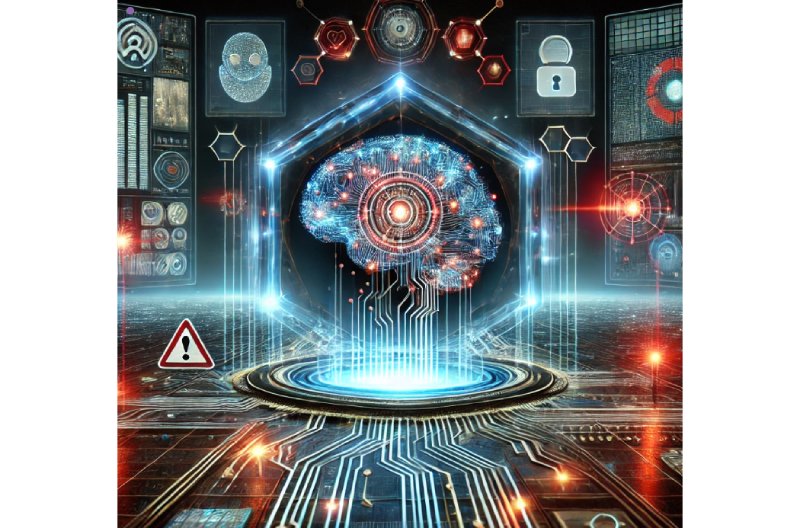Tech
Artificial Intelligence (AI) and Machine Learning Revolutionize Cybersecurity: The Race to Stay Ahead of Evolving Threats

The cybersecurity landscape is undergoing a significant transformation, driven by the rapid evolution of Artificial Intelligence (AI) and Machine Learning (ML) technologies. As cyber threats become increasingly sophisticated, the traditional methods of cybersecurity are no longer sufficient to keep pace with the emerging risks. In response, the cybersecurity industry is turning to AI and ML to revolutionize the way threats are detected, analyzed, and mitigated. AI-powered systems can process vast amounts of data, identify patterns, and learn from experience, enabling them to detect and respond to threats in real-time. ML algorithms can analyze network traffic, system logs, and user behavior to identify anomalies and predict potential threats, allowing for proactive measures to be taken.
The integration of AI and ML into cybersecurity systems has shown promising results, with many organizations reporting significant improvements in threat detection and response times. One of the key benefits of AI-powered cybersecurity is its ability to stay ahead of evolving threats. Traditional security systems rely on signature-based detection, which can be ineffective against zero-day attacks and unknown threats.
AI-powered systems, on the other hand, can learn from experience and adapt to new threats, enabling them to detect and respond to previously unknown attacks. Furthermore, AI-powered systems can automate many routine security tasks, freeing up human security analysts to focus on more complex and high-priority threats. The use of AI and ML in cybersecurity is not without its challenges, however. As AI systems become more advanced, there is a growing concern that they could be used by attackers to launch more sophisticated and targeted attacks. Additionally, the use of AI and ML requires significant amounts of data, which can be a challenge for organizations with limited resources. Despite these challenges, the potential benefits of AI and ML in cybersecurity are undeniable. As the threat landscape continues to evolve, the use of AI and ML will become increasingly important for organizations looking to stay ahead of emerging threats. The race to develop and deploy AI-powered cybersecurity solutions is already underway, with many organizations investing heavily in research and development. The future of cybersecurity will be shaped by the rapid evolution of AI and ML technologies, and organizations that fail to adapt risk being left behind. As the stakes continue to rise, the importance of AI and ML in cybersecurity will only continue to grow, driving innovation and investment in this critical field. With the ability to detect and respond to threats in real-time, AI-powered cybersecurity systems are poised to revolutionize the way organizations protect themselves against cyber threats.
Navjot Singh Talwandi
Assistant Professor
Chandigarh University
-

 Startup4 weeks ago
Startup4 weeks agoSmall Business Month Encourages Entrepreneurs to Take Stock and Scale Up with Actionable Marketing Strategies
-

 Business3 weeks ago
Business3 weeks agoFrom Passion to Powerhouse: How Lash ShayVu Is Redefining Beauty, One Lash at a Time
-

 Startup3 weeks ago
Startup3 weeks agoHow B2B Marketing Can Drive Business Growth in Today’s Competitive Market
-

 Tech3 weeks ago
Tech3 weeks agoGoogle I/O 2025: New Features, Event Schedule, Start Time, What’s Coming, What to Expect and How to Watch
-

 Tech3 weeks ago
Tech3 weeks agoPayPal Launches Offsite Ads to Expand Advertising Beyond Its Platform and Bringing New Reach for Advertisers
-

 Tech4 weeks ago
Tech4 weeks agoAdobe and LinkedIn Launch Verified on LinkedIn Badge for Content Protection and Creator Identity Verification
-

 Sports2 weeks ago
Sports2 weeks agoNFL Schedule Release 2025: Date, Time, How to Watch, International Games, Key Games, and Season Preview, Tickets and How to Watch
-

 Education4 weeks ago
Education4 weeks agoSwiss International University (SIU) Elevates Its Global Standing with Prestigious Accreditations and Global Partnerships





















